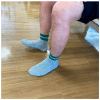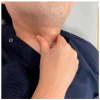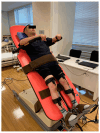Rehabilitation to Improve Outcomes after Cervical Spine Surgery: Narrative Review
- PMID: 39336849
- PMCID: PMC11432758
- DOI: 10.3390/jcm13185363
Rehabilitation to Improve Outcomes after Cervical Spine Surgery: Narrative Review
Abstract
Purpose: The increasing elderly patient population is contributing to the rising worldwide load of cervical spinal disorders, which is expected to result in a global increase in the number of surgical procedures in the foreseeable future. Cervical rehabilitation plays a crucial role in optimal recovery after cervical spine surgeries. Nevertheless, there is no agreement in the existing research regarding the most suitable postsurgical rehabilitation program. Consequently, this review assesses the ideal rehabilitation approach for adult patients following cervical spine operations.
Materials and methods: This review covers activities of daily living and encompasses diverse treatment methods, including physiotherapy, specialized tools, and guidance for everyday activities. The review is organized under three headings: (1) historical perspectives, (2) patient-reported functional outcomes, and (3) general and disease-specific rehabilitation.
Results: Rehabilitation programs are determined on the basis of patient-reported outcomes, performance tests, and disease prognosis. CSM requires strengthening of the neck and shoulder muscles that have been surgically invaded. In contrast, the CCI requires mobility according to the severity of the spinal cord injury and functional prognosis. The goal of rehabilitation for CCTs, as for CCIs, is to achieve ambulation, but the prognosis and impact of cancer treatment must be considered.
Conclusions: Rehabilitation of the cervical spine after surgery is essential for improving physical function and the ability to perform daily activities and enhancing overall quality of life. The rehabilitation process should encompass general as well as disease-specific exercises. While current rehabilitation protocols heavily focus on strengthening muscles, they often neglect the crucial aspect of spinal balance. Therefore, giving equal attention to muscle reinforcement and the enhancement of spinal balance following surgery on the cervical spine is vital.
Keywords: cervical spine; muscle exercise; physiotherapy; rehabilitation.
Conflict of interest statement
The authors declare no conflicts of interest. The funders had no role in the study’s design, data collection, analysis, or interpretation, manuscript writing, or decision to publish the results.
Figures












References
-
- Singh A., Tetreault L., Casey A., Laing R., Statham P., Fehlings M.G. A Summary of Assessment Tools for Patients Suffering from Cervical Spondylotic Myelopathy: A Systematic Review on Validity, Reliability and Responsiveness. Eur. Spine J. 2015;24((Suppl. S2)):209–228. doi: 10.1007/s00586-013-2935-x. - DOI - PubMed
-
- Echols D.H. The Hoffmann Sign. J. Nerv. Ment. Dis. 1936;84:427. doi: 10.1097/00005053-193610000-00005. - DOI
Publication types
Grants and funding
LinkOut - more resources
Full Text Sources

